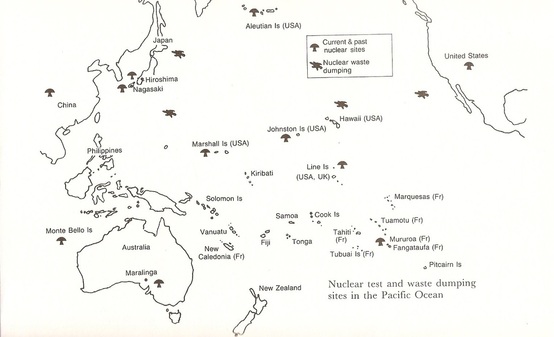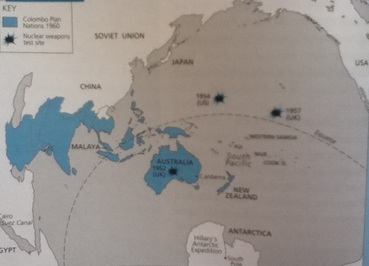Regional Security

This map of nuclear testing sites shows the abundance of testing sites and waste dumping sites in the Pacific. As well as wanting to prevent negative health effects and radiation in New Zealand, the anti-nuclear protest also had an aspect of wanting to protect the Pacific Islands that were the test sites, and the people who lived on them. This desire was caused by the increased interest New Zealand had in the South Pacific.

